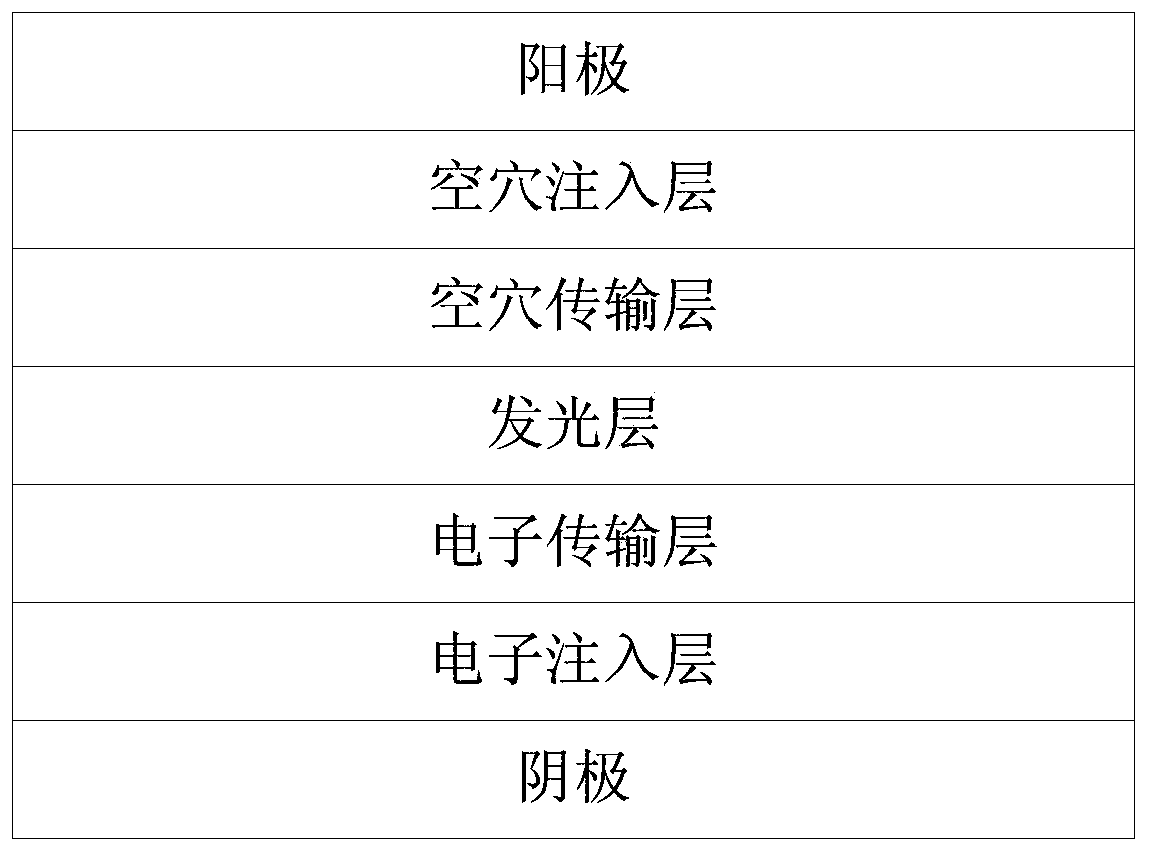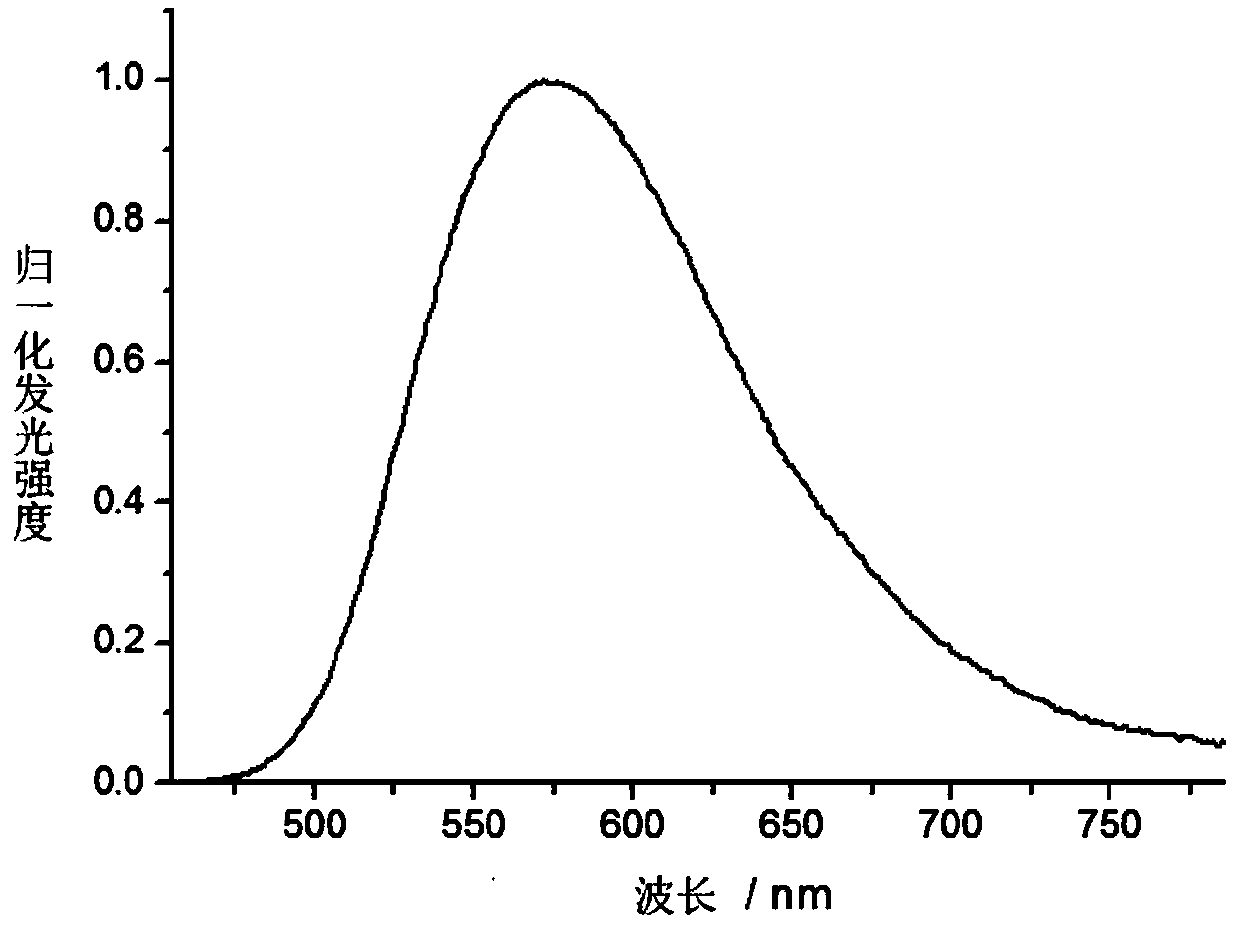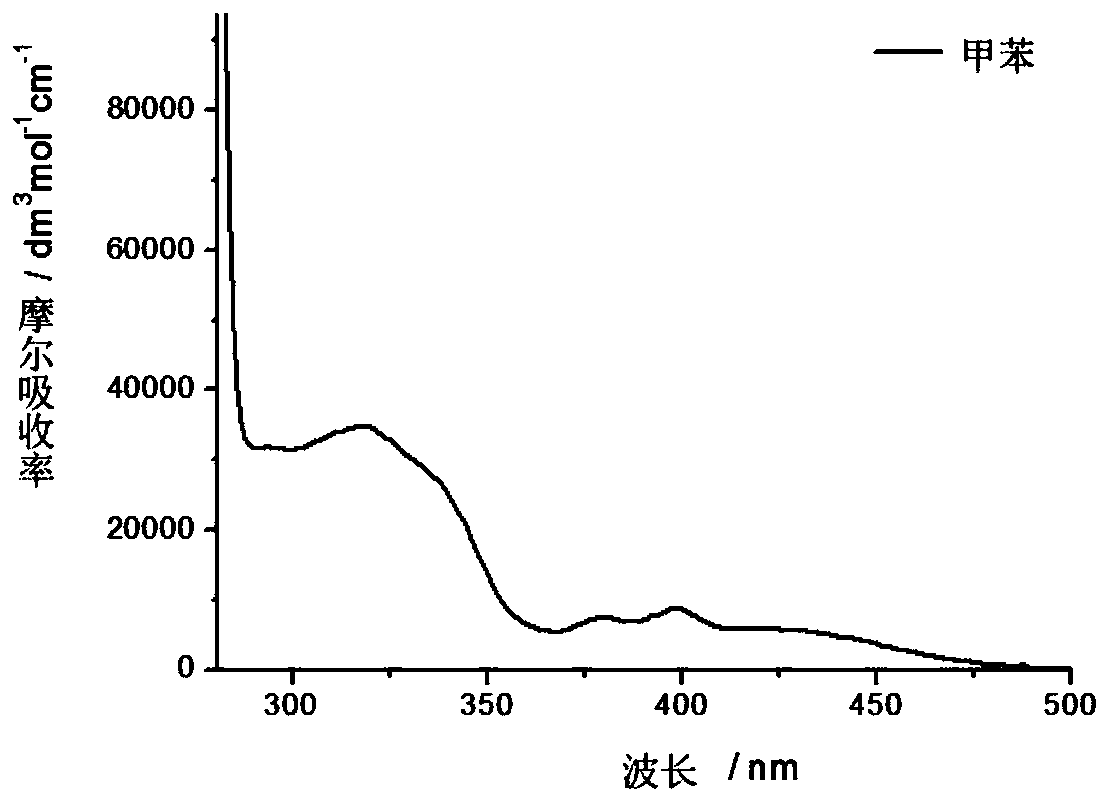Alkynyl Au (III) coordination compound and light-emitting device
A technology of light-emitting devices and complexes, applied in the field of coordination chemistry and light-emitting materials, can solve the problems of difficult to use high doping concentration, high quantum efficiency, disadvantages, etc.
- Summary
- Abstract
- Description
- Claims
- Application Information
AI Technical Summary
Problems solved by technology
Method used
Image
Examples
Embodiment 1
[0085] In order to make the present invention easy to understand, the preparation method of the alkynyl group (III) complex of the present invention is introduced below by taking specific complexes 101-104 as an example, and the reaction formula is as follows:
[0086]
[0087]Compounds 101-104 were synthesized with reference to the methods reported in the existing literature. Except for the different reaction reagents, other reaction conditions are basically the same or similar. Those skilled in the art can change the C^N^C-Au-Cl complexes with different substrate structures and alkyne reagents are synthesized to obtain different alkyne base (III) complex structures involved in the present invention.
[0088] Among them, the structural characterization data of complexes 101-104 are as follows:
[0089] Complex 101
[0090] 1 H NMR (500MHz, CD 2 Cl 2 ): δ7.89(t, J=8.5Hz, 1H), 7.79(d, J=8.0Hz, 2H), 7.45(d, J=6.0Hz, 2H), 7.39(d, J=8.5Hz, 2H ),7.29(t,J=7.5Hz,4H),7.12(d,J=...
Embodiment 2
[0102] The photophysical properties of complexes 101-104 were tested at room temperature, and the results are shown in Table 1 below:
[0103] Table 1. Photophysical data of alkyne base(III) complexes measured at room temperature in different environments
[0104]
[0105] lambda abs : Absorbed light wavelength, ε: Molar extinction coefficient, λ em : wavelength of emitted light, Φ: external quantum efficiency, τ: luminescence lifetime, k r : Radiation decay rate
[0106] Analysis: It can be seen from the above table 1
[0107] 1) Metal complexes 101-104 have strong absorption peaks in the absorption wavelength range of 294-338nm, and the extinction coefficient ε is between (15-35)×10 3 mol -1 dm 3 cm -1 between, and there is a medium-intensity absorption peak at a wavelength of 359-399nm, which is the characteristic absorption peak of the C^N^C ligand, and the extinction coefficient ε is between (5-9)×10 3 mol -1 dm 3 cm -1 Between, there is a weak and broad abs...
Embodiment 3
[0110] Example 3 - OLED 1
[0111] Firstly, complex 101 is used as a dopant to set different doping concentrations to be applied to the light-emitting layer of the light-emitting device, and the device structure of OLED 1 is obtained by design, and the sequence from the anode to the cathode is as follows:
[0112] ITO / HAT-CN(5nm) / TAPC(50nm) / TCTA:Complex 101(10nm) / TmPyPb(40nm) / LiF(1.2nm) / Al(100nm)
[0113] Then, according to the preset structure and component parameters, a light-emitting device is prepared, and the preparation process is roughly as follows:
[0114] a) Using a transparent glass substrate coated with ITO, ultrasonic cleaning with detergent and rinsing with deionized water, and drying for later use;
[0115] b) transfer the dried substrate to a vacuum chamber, sequentially deposit by thermal evaporation, and sequentially obtain functional layers with preset thicknesses: the hole injection layer HAT-CN with a thickness of 5nm, and the hole transport layer with a ...
PUM
| Property | Measurement | Unit |
|---|---|---|
| current efficiency | aaaaa | aaaaa |
| energy conversion efficiency | aaaaa | aaaaa |
| quantum efficiency | aaaaa | aaaaa |
Abstract
Description
Claims
Application Information
 Login to View More
Login to View More - R&D
- Intellectual Property
- Life Sciences
- Materials
- Tech Scout
- Unparalleled Data Quality
- Higher Quality Content
- 60% Fewer Hallucinations
Browse by: Latest US Patents, China's latest patents, Technical Efficacy Thesaurus, Application Domain, Technology Topic, Popular Technical Reports.
© 2025 PatSnap. All rights reserved.Legal|Privacy policy|Modern Slavery Act Transparency Statement|Sitemap|About US| Contact US: help@patsnap.com



